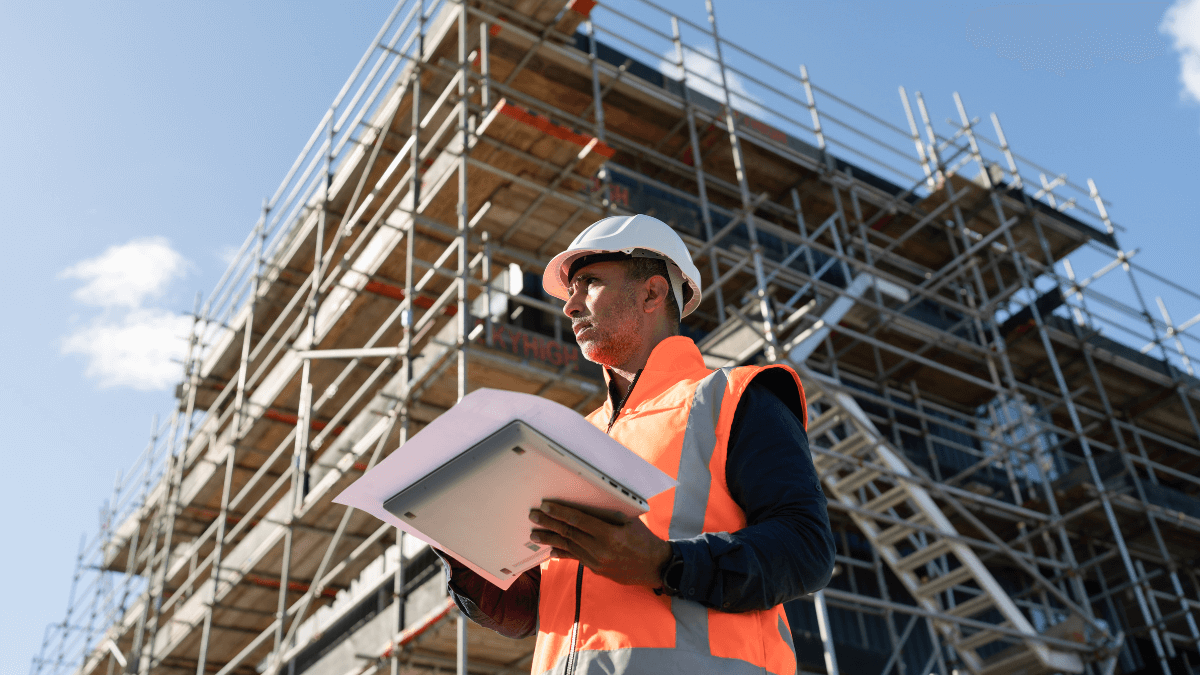Key Takeaways
- Asset tracking software like GoCodes Asset Tracking helps construction companies mitigate the risk of construction site theft.
- Drones and wearable safety technology can reduce safety risks.
- The use of BIM leads to cost savings, as it helps prevent construction rework.
Construction businesses know to expect the possibility of risks that can threaten the success of their projects.
However, tackling said risks on time is often easier said than done.
Unmanaged risks carry dire consequences, from disrupted project timelines to eroded profit margins.
So, what can you do to manage them more effectively?
Enter construction technology.
In this article, we’ve outlined 8 key types of technology that are your greatest allies in mitigating construction risks.
Eager to know more? Let’s dive right in!
In this article...
Scheduling Software
Scheduling solutions can help you stay on top of project deadlines and avoid bottlenecks that result in project delays.
The idea behind technology-assisted scheduling is simple: enhanced coordination means you’ll be hitting your milestones with more ease.
At the same time, improved scheduling helps you avoid clashes that would put you at risk of missing deadlines.
The more complex the project, the more you need scheduling software to set deadlines, assign tasks, and allocate resources.
Here’s a glimpse of Buildertrend’s construction scheduling software.
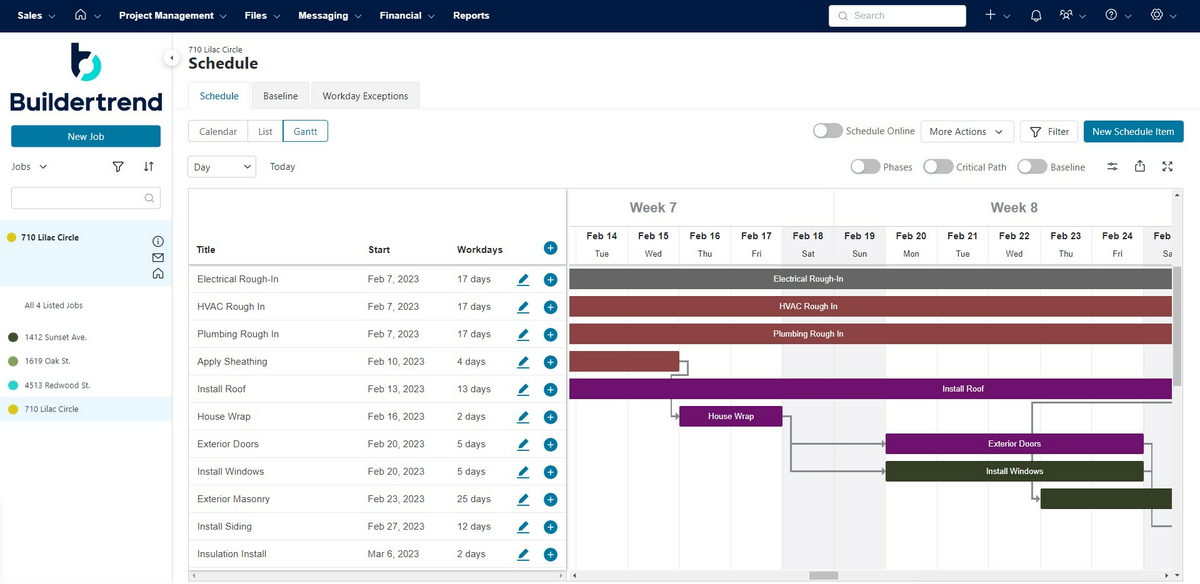
A comprehensive dashboard like in the example above improves visibility and collaboration while making sure everyone sticks to the project schedules.
However, more advanced scheduling technology enhances construction risk management further by helping teams make better decisions overall.
One such example comes from ALICE Technology and its AI-driven scheduling.
Their client, Build Group, wanted to test and enhance their initial construction schedule by exploring alternatives provided by an AI-based construction scheduling tool.
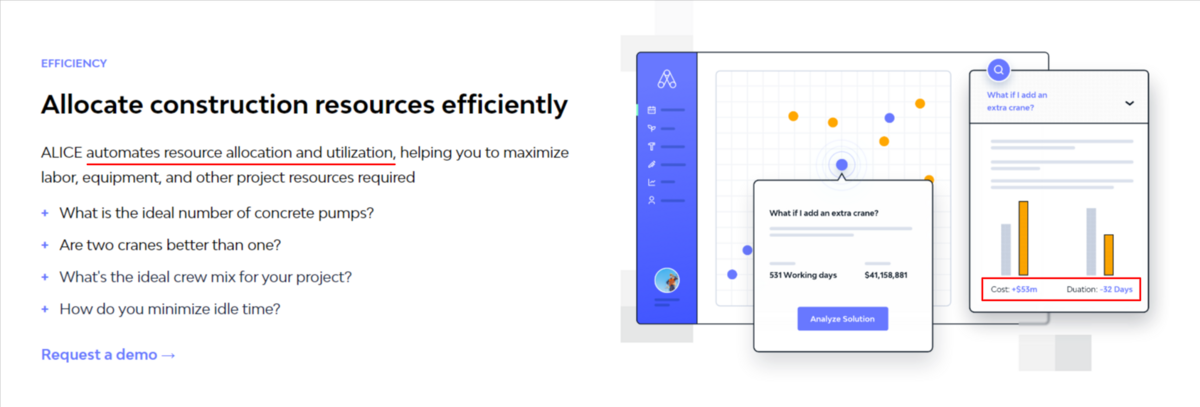
The ability to adjust different variables and generate dozens of possible timelines through so-called construction optioneering resulted in a much improved, and highly cost-efficient production schedule.
Ultimately, this technology enabled Build Group to save several weeks and millions of dollars on a specific project.
The same tool also proved invaluable to the company in light of the COVID-19 pandemic and its additional complexities.
With or without the sprinkle of AI, scheduling technology will help you deal with the risks of missed deadlines.
Predictive Analytics
Predictive analytics help businesses prepare for the future by analyzing existing data.
In a nutshell, previous project data can help you predict potential challenges and find the best course of action to stay on time and budget.
The importance of such technology is best evident in McKinsey’s 2015 research.
The study showed significant time and cost overruns among large construction projects.

Nearly a decade later, predictive technology offers a solution to keep projects on track and within the agreed-upon budget.
The ability to factor in severe weather conditions, labor shortages, or supply chain disruptions enables companies to plan ahead and take the best possible preemptive action.
However, it’s not only about dealing with specific scenarios—rather, it’s about changing the overall mindset.
Josh Kanner, Sr. Director of Product and Strategy for Analytics & AI at Oracle, mentions several key observations that emerged from analyzing 7 centuries of construction incident data.
Kanner, who previously worked on using machine learning to eliminate jobsite risks, explains that—contrary to popular belief—a single construction incident increases the chances of additional incidents.
“[The idea is] you have an incident one week and the next week everybody’s focused, and risk drops. What folks don’t realize is that you’re 3 to 10 times more likely, and an average of 6 times more likely to have another incident two to three weeks after the [initial] incident.”
In other words, extra caution is necessary for weeks following a jobsite incident.
Kanner concludes that the benefits of predictive analytics increase over time and extend into competitive advantage.

Predictive analytics shape both your present and the future, so the sooner you adopt, it the better.
Asset Tracking Software
Asset tracking software successfully mitigates the risks of equipment theft and loss, which are among the main challenges on construction sites.
By tracking the location and usage of equipment in real time, asset tracking solutions reduce the chances of theft or unauthorized use of valuable assets.
The importance of asset tracking is also corroborated by the findings presented in the 2023 IronPros Report.
Their research showed that construction companies are increasingly adopting different technologies.
However, GPS-enabled trackers emerged on top, with 30% of surveyed contractors already using the technology, and 21% planning to adopt it soon.
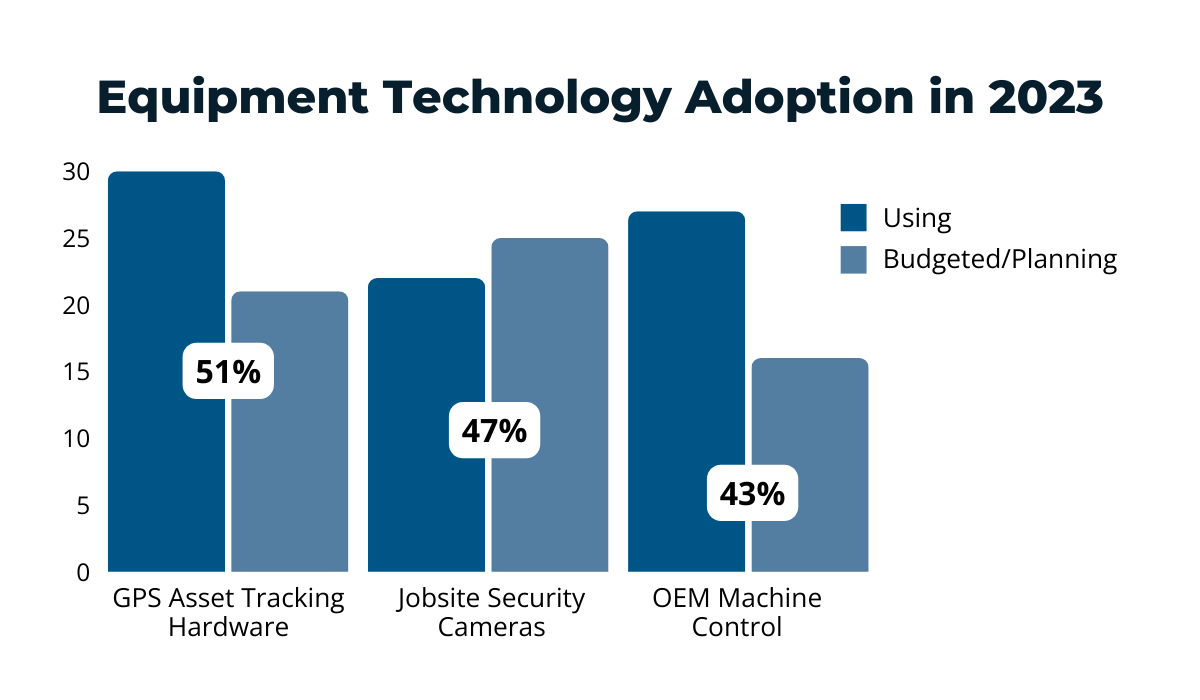
As you can see, the top three technologies are all centered around security and better asset usage, highlighting that there is awareness of how big of an issue construction site theft can be.
One example of comprehensive asset tracking software perfect for mitigating the risk of theft is our own GoCodes Asset Tracking.
GoCodes Asset Tracking offers real-time GPS tracking to boost asset visibility and security—both on construction sites and when your fleet of valuable assets is on the go.
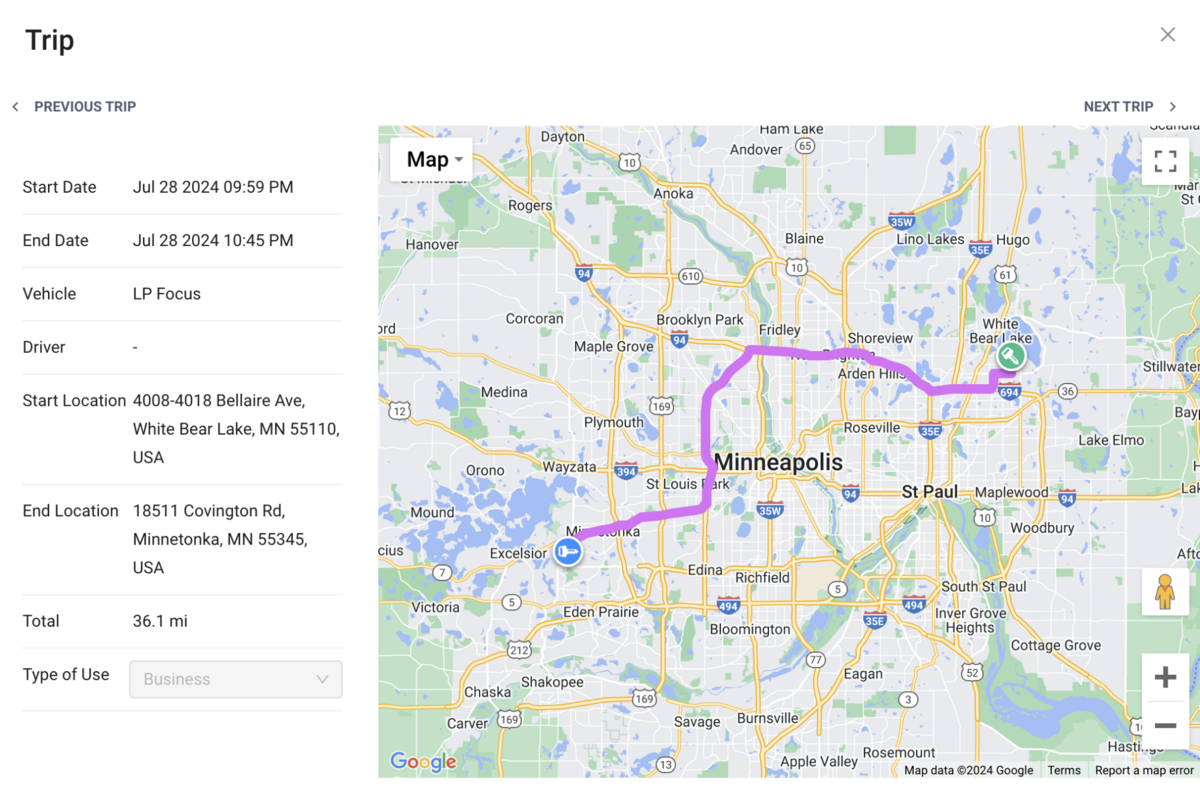
With the help of our trackers, you can keep a watchful eye on your assets at all times and readily access other crucial data on their condition, usage history, and service schedules.
The GoCodes Asset Tracking software also incorporates powerful geofencing features that enhance theft prevention and increase the chances of asset retrieval.
Geofences act as virtual boundaries, enabling you to set a perimeter that your machine can’t cross without alerting you.
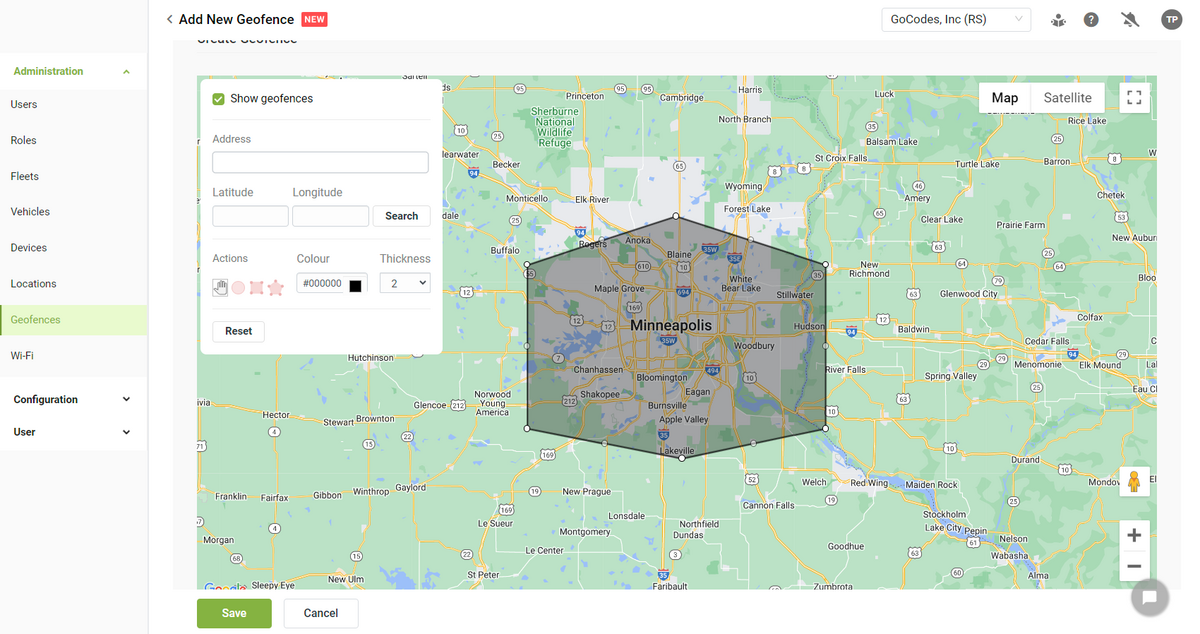
Real-time loss alerts accelerate response time in cases of potential theft, enabling you to quickly send the asset’s latest location to law enforcement and aid in its fast recovery.
Even in cases where theft hasn’t been attempted, being notified about unauthorized use can help prevent serious damage to the asset or loss of life.
It is clear that asset tracking technology offers numerous advantages—including bolstered security—making it a technology worth considering.
Drones
Using drones gives you access to previously inaccessible corners of the construction site, enabling proactive risk mitigation and improved safety.
Drone technology has a wide range of applications in construction: from enabling companies to conduct initial site surveys to monitoring progress and addressing potential hazards.
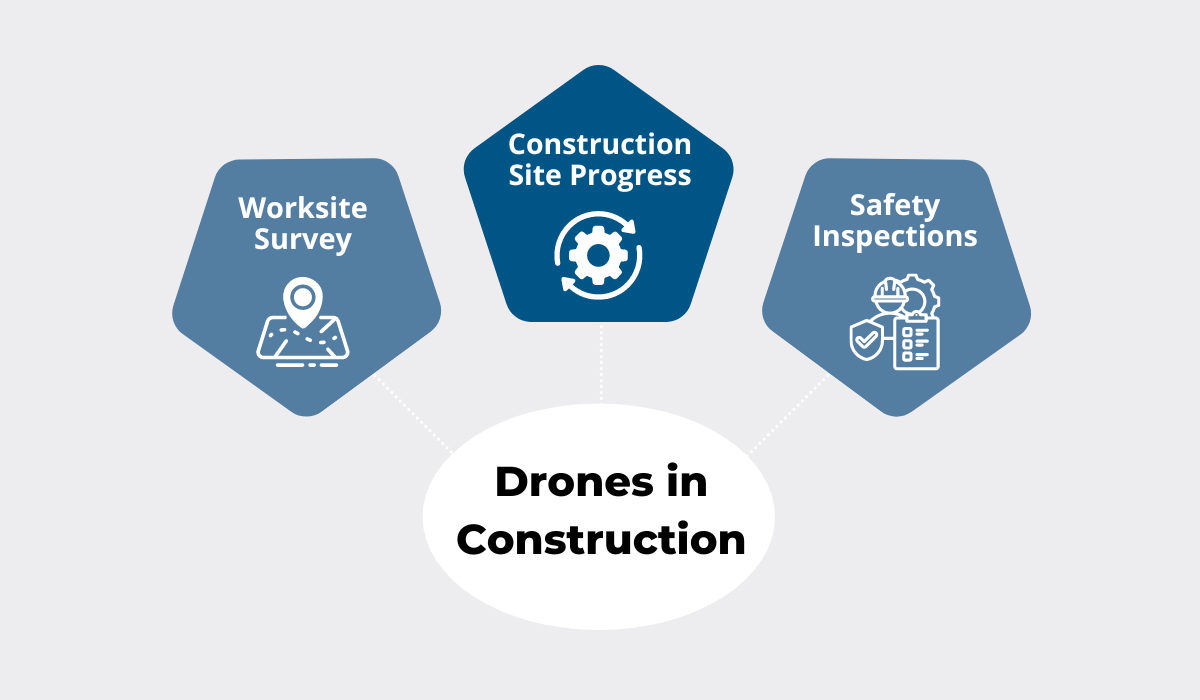
A well-known example of drone use is the 2014-2016 construction of the Golden 1 Center, a premier venue in Sacramento.
The construction project served as the pilot run for the award-winning drone monitoring system, developed by a team from the University of Illinois.
Automated progress monitoring and seamless visual updates for all stakeholders provided an efficiency boost but also improved overall safety, as pointed out by the team’s lead investigator, Dr. Mani Golparvar-Fard.
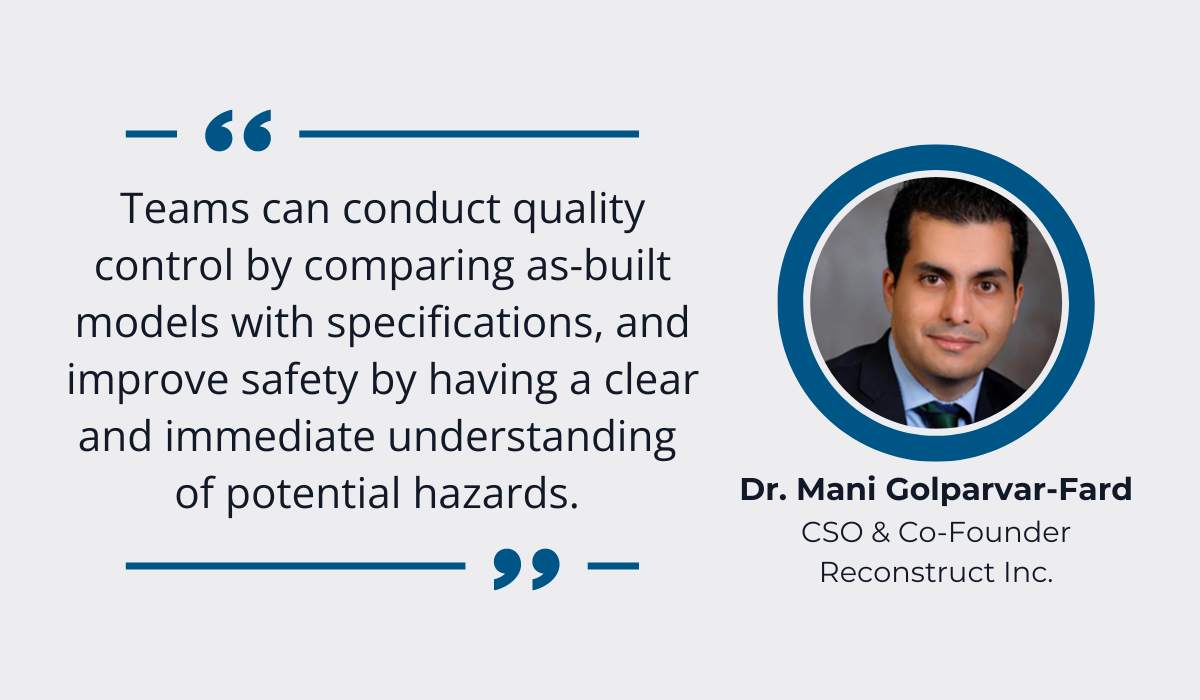
Restricted or hazardous environments are typical for construction, so having drones collect real-time data on anything that might put workers at risk is a game changer.
Drones can assess site safety from a bird’s eye view, mapping dangerous areas, identifying potential OSHA violations, and actively improving site safety through:
- Autonomous inspections
- Virtual walkthroughs
- Aerial flights
More importantly, the ability to inspect previously inaccessible or hazardous areas means fewer risks for technicians, safety inspectors, and other workers who would be deployed otherwise.
In other words, drone technology empowers construction companies to take immediate action and minimize the risk of avoidable accidents.
Wearable Safety Technology
Wearable technology is another advancement that is revolutionizing construction site safety and minimizing risks for workers.
Working in construction always involves certain dangers and risks, but the reality of it is most evident when we look at numbers.
The data compiled by the UK’s Health & Safety Executive (HSE) shows that 51 construction workers were killed in work-related accidents in 2023, which is over a third of the total number.
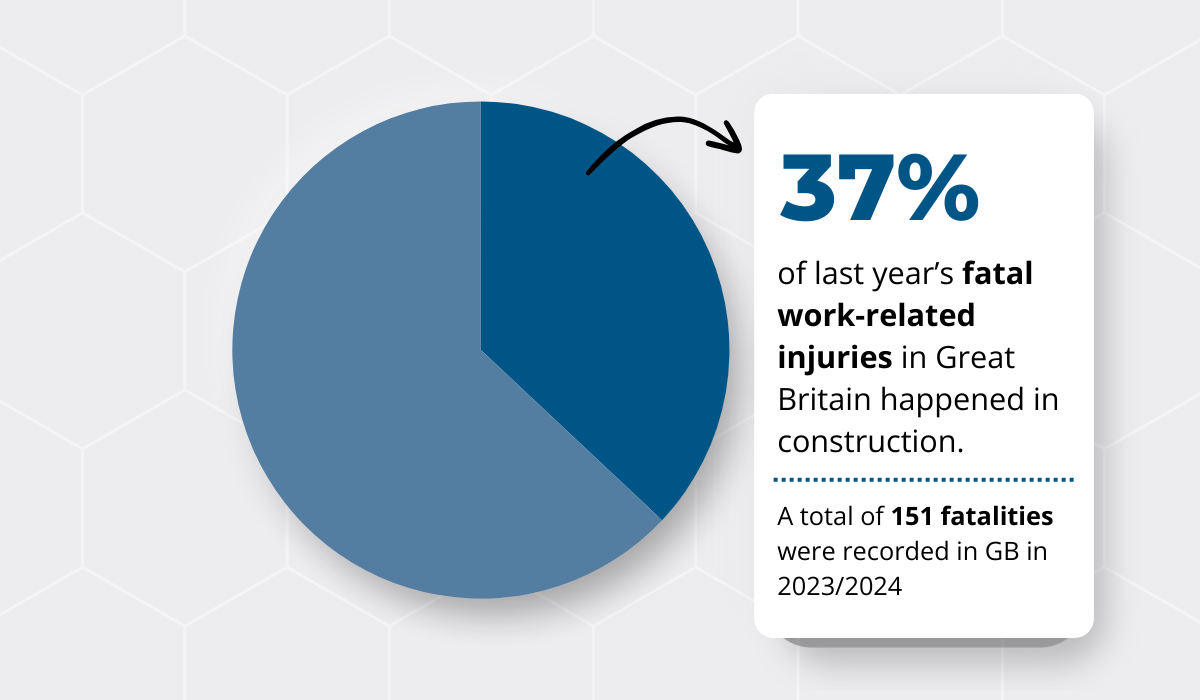
One way of countering these dangers and reducing loss of life is through wearable technology.
These smart helmets, vests, glasses, and more are equipped with sensors and communication devices that:
- Monitor construction workers’ vital signs
- Detect hazardous conditions
- Provide real-time updates to both the wearer and supervisors
In case of an accident or unsafe conditions, these tools issue alerts and can even administer first aid, potentially saving lives in the process.
Let’s take exoskeletons, for example.
They help workers avoid injury by reducing muscle strain and boosting strength.
Exoskeletons vary based on the different muscle groups they target, but they can be broadly divided into arm-support and back-support models, as these body parts experience the most strain.
A lot of field testing is still needed, but there is evidence of the benefits of this technology according to Dr. Maury A. Nussbaum, an expert on occupational ergonomics and injury prevention.

What’s certain is that wearable technology is gradually creating a new culture of safety and health awareness while helping companies mitigate construction risks directly on the field.
Building Information Modeling (BIM)
One of the crucial tools used to mitigate risk while enhancing project efficiency is building information modeling, BIM for short.
BIM allows for detailed 3D modeling and simulation of construction projects.
This aids decision-making at every project phase, but especially when it comes to design.
Namely, construction teams can leverage BIM technology to identify potential design clashes or structural issues in the early planning and designing stages.
That way, they won’t lead to costly rework later on.
In fact, the use of BIM leads to cost savings and significant return on investment, as shown by this analysis of several construction projects realized from 2005 to 2007.
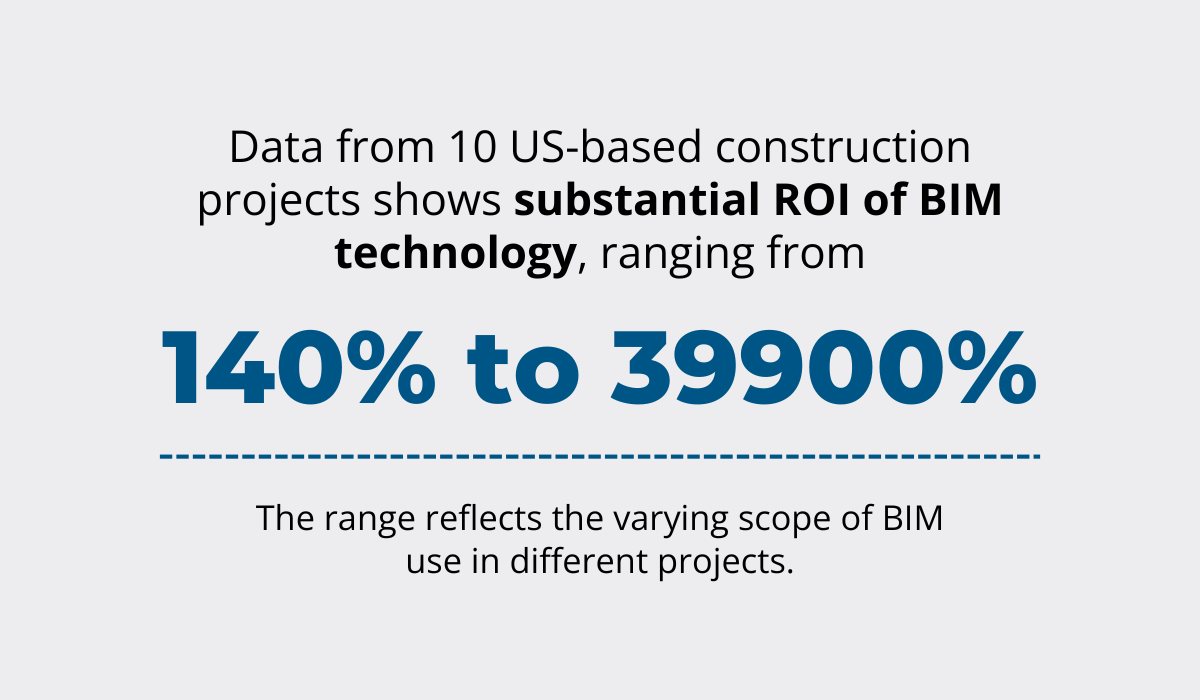
The authors stated that they didn’t account for secondary cost savings realized thanks to BIM implementation, meaning that the BIM’s potential ROI is far greater.
What’s more, the technology has advanced significantly since this analysis was conducted.
Nowadays, Autodesk Revit is considered one of the BIM modeling powerhouses, providing a range of tools to create accurate and highly detailed building models.
The software’s robust capabilities were put to the test during the reconstruction of the Notre-Dame Cathedral, which suffered significant damage in the 2019 fire.
With the cultural significance of the centuries-old building and the complexity of its restoration, the BIM tool soon proved essential.
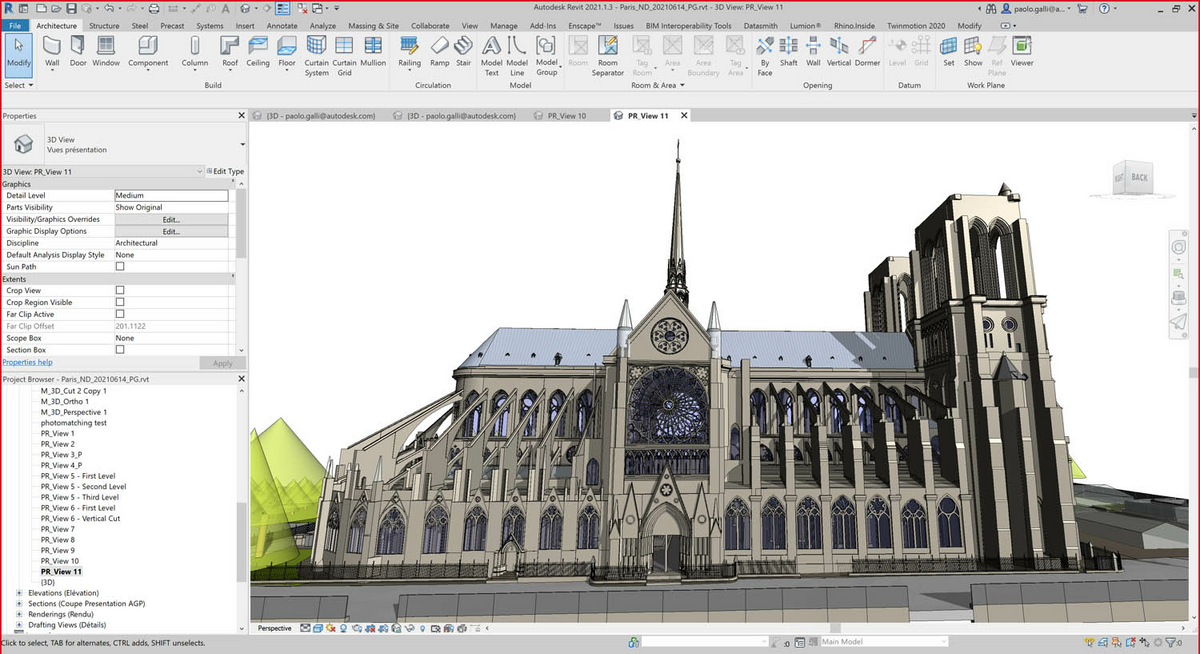
The software enabled seamless collaboration of teams of historians, architects, engineers, and construction professionals, ensuring that each project parameter was carefully followed.
The cathedral is set to reopen in December 2024, just five years after the devastating fire, and this is in no small thanks to the BIM technology and its huge potential.
Augmented Reality (AR)
Augmented reality (AR) mitigates the risks of construction errors and rework by facilitating real-time design adjustments.
AR technology enables users to put a new layer of imagery over their physical reality, which allows for close examination and comparison.
Although it has multiple applications in construction and other fields, the technology’s significance is especially clear when workers are bringing the design to life.
According to the findings of several studies analyzed in one report, the costs of rework can range between 7.25% and 10.89%.

These figures account for both direct and indirect costs, reinforcing the importance of vigilant quality control and reducing errors.
Luckily, AR can help you with that.
For example, your workers can easily access the layout of pipelines, electrical communications, and texture data from the BIM program.
Once the overlay is set, they can ensure that the correct specifications are followed to a T.
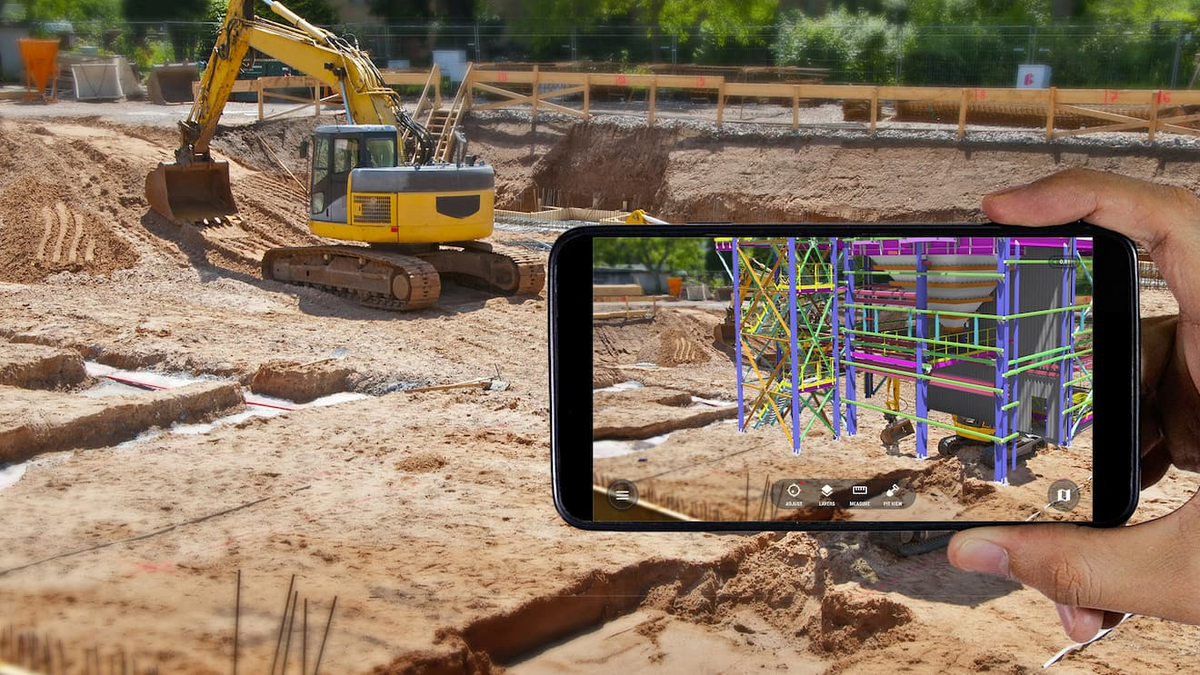
So, how do you choose the right option for you?
AR device parameters fall into four major categories:
- general properties,
- sensors,
- computational capacities, and
- display capacities.
Each of these categories should be carefully considered, but one of the most important considerations for construction is product durability i.e. the hardware’s working temperature range or water resistance.
Adopting AR technology brings enhanced accuracy and efficiency, helping you prevent costly rework while empowering you to make real-time design adjustments.
Collaboration Platforms
Collaboration platforms help you reduce workflow inefficiencies and mitigate the risk of miscommunication.
Miscommunications are common in the construction sector and can happen between teams in the field and those in the office, as well as among different project stakeholders.
However, poor business communication is an issue across all industries, and the consequences can be devastating.
This is evidenced by the 2022 research on business communication trends.
Below, you can see some of the key findings regarding the impact of poor and the outcomes of effective communication.
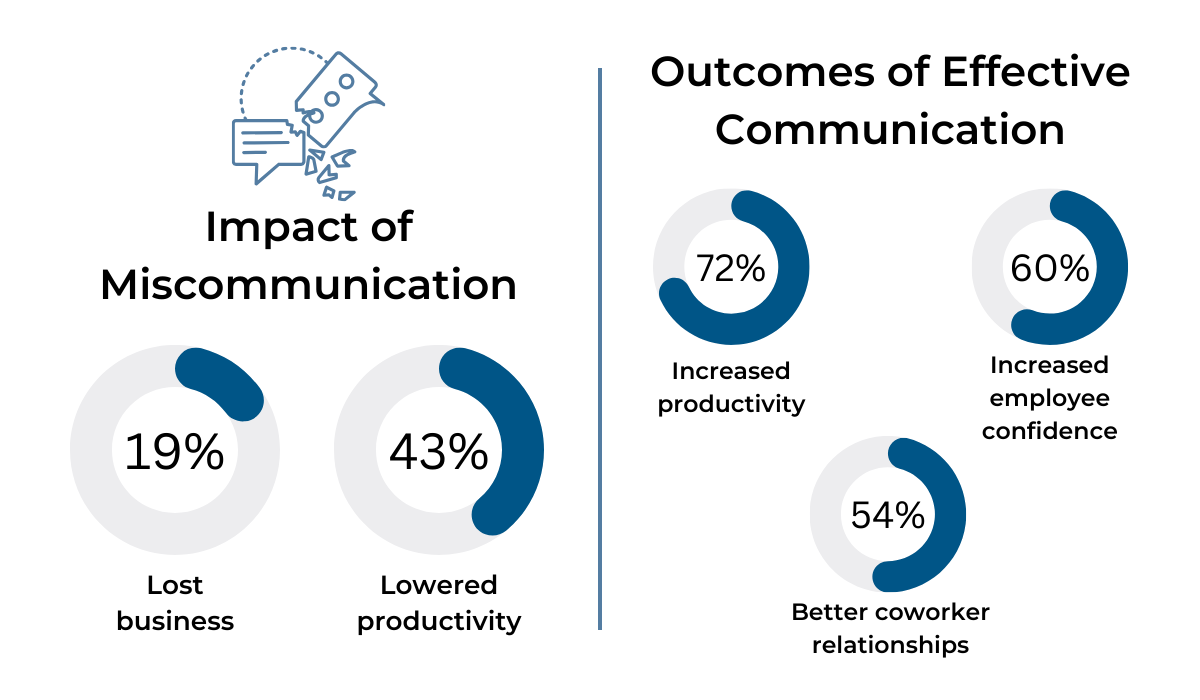
It’s crystal clear that effective communication benefits productivity, coworker relationships, and the confidence of your employees.
So, ensuring seamless communication between all sides should be one of the construction project management priorities.
Cloud-based collaboration platforms can help you do exactly that.
How?
By enabling real-time sharing of updates, documentation, and feedback between all project stakeholders.
So, no matter what changes occurred in the project and when, everyone stays in the loop and no vital piece of information can slip through the cracks.
You can choose between standalone collaboration platforms or larger project management suites, but the key characteristics to look out for include:
- Ease of use
- Real-time collaboration
- Centralized file storage
- Integration with other tools
The solution should also enable you to customize permission levels and easily navigate through version history.
Here’s an example of how Procore, a comprehensive construction project management solution, enables easy syncing and storing of construction drawings and other project data.
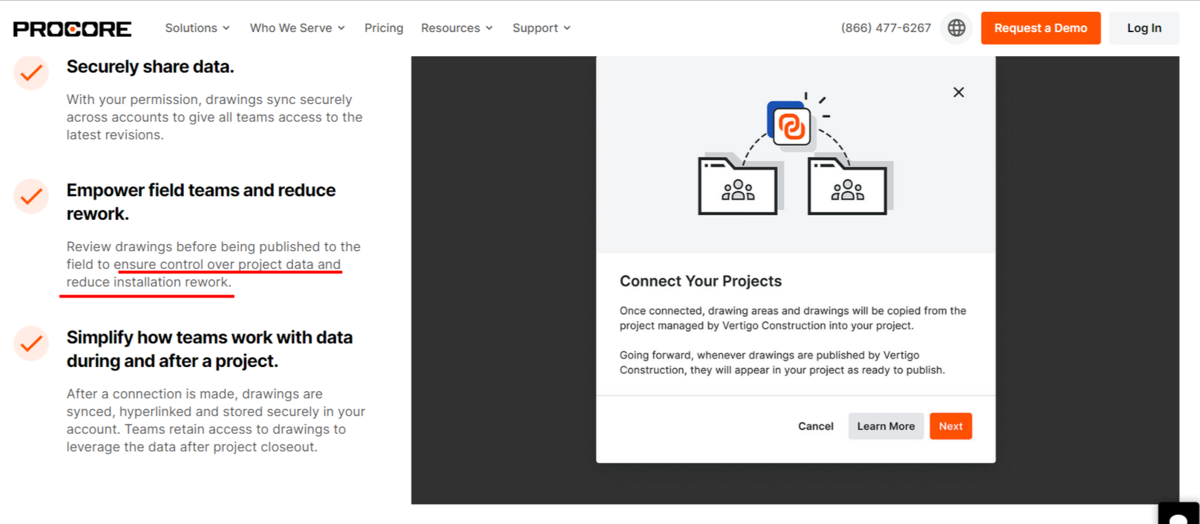
The verdict is clear: collaboration platforms are essential spaces for construction professionals to ensure alignment on all levels and eliminate risks that could hinder project success.
Conclusion
Technology offers an unprecedented degree of control over the construction process and its various risks: from safety and compliance to miscommunications and supply chain disruptions.
But, no matter the kind of risk, adopting diverse technologies can help prevent costly issues down the line.
And you’re not just filling the gaps either—you’re actively building your capacities and competitive advantage.
Are you already using some of the technologies we covered?
If not, think about what your business needs right now, and take some time to explore the options.
The positive impact will certainly be worth the investment!

